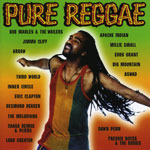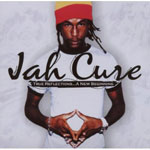::Originally Posted on the MI Blog 8/3/11::
 “Native Wayne” Jobson is a Grammy Award-winning producer and one of the leading authorities on all things Reggae. Born in Jamaica, Wayne grew up listening to and performing with some of Reggae’s most legendary names. An artist in his own right, Wayne and his band “NATIVE,” was the first Reggae artist to be signed to Clive Davis’ Arista Records in 1978 and were produced by Lee “Scratch” Perry in his legendary Kingston, Jamaica studio Black Ark.
“Native Wayne” Jobson is a Grammy Award-winning producer and one of the leading authorities on all things Reggae. Born in Jamaica, Wayne grew up listening to and performing with some of Reggae’s most legendary names. An artist in his own right, Wayne and his band “NATIVE,” was the first Reggae artist to be signed to Clive Davis’ Arista Records in 1978 and were produced by Lee “Scratch” Perry in his legendary Kingston, Jamaica studio Black Ark.
Since then, Wayne has built an extensive career as a musician and producer working with artists such as Jimmy Cliff, Toots and the Maytals, Gregory Isaacs, 311, Thievery Corporation, and was an executive producer for No Doubt’s Rock Steady album, which won him two Grammy Awards. Well-known in the world of radio, Wayne hosted the show “Reggae Revolution” on KROQ-FM for many years. The show helped break many American rock-reggae artists such as Sublime, 311, Slightly Stoopid and others. He currently hosts the show “Alter-Native” on Indie 103.1, which airs online on indie1031.com and on local radio stations nationwide.
Wayne’s knowledge of Reggae has been consulted by music historians around the globe. Wayne was both a writer and producer for the film Stepping Razor- Red X, a documentary on the life of Peter Tosh, which was nominated for a Prix Genie in the category of “Best Documentary” in 1993 by the Academy of Canadian Cinema & Television. He has also produced two episodes of “VH1, Behind the Music,” one on the life of Bob Marley and another on the life of Peter Tosh, among many other pieces about the history of Reggae both on film and in print.
“Reggae,” Wayne says, “really all came out of a place called Alpha, Alpha Boys School. It’s where they trained all the Jazz musicians. Every great musician in Jamaica learned how to play there. There was a Catholic nun who was the head of the school that trained them and disciplined them and made them into really great musicians.
“It’s relatively poor in Jamaica now, and the kids don’t really have instruments. With Dancehall, they just have the rhythm so they just go into a studio and rap over a rhythm and get a number one song. Kids nowadays say ‘Why would I spend years studying music to become Bob Marley when I could just rap some foolishness and get in the top ten?’ Dancehall has set a standard where the kids aspire to become rappers and they no longer aspire to become great musicians, they’ve stop learning keyboard and guitar and all the great music.”
This modern scene is contrasted with the 1970’s when musicians like Bob Marley, Peter Tosh, Jimmy Cliff and others like them were writing songs that would define a generation.
“At the time,” Wayne says, “they were really hungry as they were writing those songs. Bob Marley and Peter Tosh didn’t look at themselves as ‘musicians,’ saying ‘Hey I’m a musician and I want to ‘make it,’ and I want to get number one and get some girls.’ For them they saw themselves as messengers, for them this was like church. When it’s much more larger than life for you and you’re writing it like a sermon, rather than a hit – when you look at it like that, then you write the song much more seriously than you would sitting down with a record company who sits you down and says, ‘Hey we need to write another hit.’
 “The problem with Reggae today,” Wayne says, is that “Bob Marley set a standard so high, that it just makes everything else sound like a joke. The difficult thing is that some of the songs coming out today are good, some are very good, but they aren’t songs that people want to cover. When you hear a song like ‘Three Little Birds,’ it’s not one of Bob’s best songs but how many people have covered that? Hundreds of people have covered that. How many people have covered ‘I Shot the Sheriff?’ He set a standard there that just nobody in reggae is writing right now. We have a few people in reggae like Jah Cure, Richie Spice, Taurus Riley and all of them have good songs, but we need somebody that’s going to write another Redemption Song.”
“The problem with Reggae today,” Wayne says, is that “Bob Marley set a standard so high, that it just makes everything else sound like a joke. The difficult thing is that some of the songs coming out today are good, some are very good, but they aren’t songs that people want to cover. When you hear a song like ‘Three Little Birds,’ it’s not one of Bob’s best songs but how many people have covered that? Hundreds of people have covered that. How many people have covered ‘I Shot the Sheriff?’ He set a standard there that just nobody in reggae is writing right now. We have a few people in reggae like Jah Cure, Richie Spice, Taurus Riley and all of them have good songs, but we need somebody that’s going to write another Redemption Song.”
Wayne explained that listeners are looking to American Rock-Reggae for what they can’t find in Dancehall or other music coming out of Jamaica these days. These bands are inspiring an interest in the genre among listeners to go back and discover Bob Marley, Peter Tosh, Jimmy Cliff and others. Reggae is coming back to life in these bands and turning on a whole new generation to classic Reggae that would have never known about it otherwise.
“The blueprint for American Rock Reggae was Sublime. Nobody is writing songs like them today. I got to help break a lot of those bands on KROQ: No Doubt, Sublime, 311, Sugar Ray… Now there’s a whole new generation of Rock Reggae with some amazing new bands, Slightly Stoopid, Rebelution, Iration, Soldiers of Ja Army, Aggrolites, Phoenix Rose. It’s what the kids what to hear because nobody from Jamaica is giving them that, there’s just getting the dancehall – now they’re looking to America to give it to them.”
On Production …
Wayne related an anecdote of the first recording session for Barrington Levy’s “Vice Versa Love.” Perfect the minute it was recorded, he said Barrington has a pure voice unlike any other in Reggae. “It was one take, he said, “Barrington just went into the studio, the keyboardist just sat down at the keyboard and Barrington just sang it. That was going to be the demo for them to bring in the band and all. But when they finished the keyboardist just couldn’t believe he didn’t make any mistakes, and Barrington couldn’t believe he didn’t make any mistakes. And they just released it like that. And it’s the best song ever. No punch-ins, no auto-tune, no nothing.”
Tracks like Barrington’s “Vice Versa Love,” teach producers an important lesson about learning to recognize when they need to let a song speak for itself. “Another song like that,” he said, “Is Jimmy Cliff’s, ‘Many Rivers to Cross’ – the classic. Jimmy once said to me, ‘I wish I could re-do the vocal on that song’ and I said ‘What? That’s the greatest vocal of all time.’ One thing I’ve learned from producing is that if a song is good, if it stands up on its own, you have to leave it alone.
“Chris Blackwell at Island Records told me that Bob Marley came to him and played him ‘Redemption Song’ on acoustic guitar and was like, ‘OK now we gotta get the band, the horns, etc’ and Chris said ‘Don’t touch that, record it right now, just the way it is.’ So they took it into the studio. In three takes they had ‘Redemption Song.’ If the song is that good, you don’t need anything else on top of it.”
On Songwriting…
 “I often tell people, when writing songs; the most important thing is the opening line. You have to open the line and just kill them, when you finish the opening line they should just go ‘OK, I can’t take anymore, it’s just too genius you’ve killed me.’ Probably one of the best opening lines of all time is ‘Hello Darkness My Old Friend…’ from Paul Simon’s “Sound of Silence.” I mean how are you going to top that? You know exactly what the song is about, he’s already destroyed you.
“I often tell people, when writing songs; the most important thing is the opening line. You have to open the line and just kill them, when you finish the opening line they should just go ‘OK, I can’t take anymore, it’s just too genius you’ve killed me.’ Probably one of the best opening lines of all time is ‘Hello Darkness My Old Friend…’ from Paul Simon’s “Sound of Silence.” I mean how are you going to top that? You know exactly what the song is about, he’s already destroyed you.
“What I always tell songwriters, the greatest set of opening lyrics are from “The Year of the Cat,” by Al Stewart. ‘On a morning from a Bogart movie in a country where they turn back time, you go strolling through a crowd like Peter Lorre contemplating a crime. She comes out of the sun in a silk dress running, like watercolor in the rain, don’t bother asking for explanations, she’ll just tell you that she came – In the Year of the Cat.’ How are you going to top that right? It’s genius. Coming up with clever opening lines and capture the people right away is what you have to do.
“Nowadays you hear so many songs of people singing, ‘I’m so lonely: Listen to me, Life’s so lonely, the world is so lonely.’ Paul McCartney didn’t say that life is lonely, he said ‘Eleanor Rigby picks up the rice in a church where a wedding has been.’ Could anyone be more lonely than that? ‘Father McKenzie writing the words to a sermon that no one will hear.’ Can anyone be more lonely than that? ‘Look at all the lonely people.’ Eleanor Rigby was absolute genius, but the song isn’t called ‘Lonely, Lonely, I’m so Lonely’ and the chorus doesn’t go ‘Everybody’s Lonely,’ No. You have to paint a picture with the songs and create images. That’s how you write a good song.”
Here’s an extensive list of the music Wayne suggests you should check out. The list highlights not only the original groundbreakers in Reggae, but also the musicians who are taking the genre in new directions today.
———————————————————————————————
| 1. Pure Reggae, Compilation

|
“The album was number one on the pop Hawaii charts for about three months. For a compilation, that’s really rare. It’s a good place to start.” |
2. Til Shilo, Buju Banton.
|
“If they’re looking at modern day reggae, you still have reggae going but then you have dancehall. I’m not a big fan of dancehall. Buju Banton has some good reggae and some dancehall. If you want to buy one dancehall album, the best dancehall album is Til Shilo, by Buju Banton.” |
3. Ultimate Collection, Jimmy Cliff.
|
“You really have to study any Jimmy Cliff song.” |
| 4. “Longing For,” Jah Cure.

|
“In modern day reggae, the artists that are happening now are Jah Cure, their song “Longing For,” had a great structure.” |
| 5. “Vice Versa Love,” Barrington Levy.

|
“Barrington has a truly pure voice. Probably one of the best singers in Reggae.” |
| 6. “She’s Royal,” Tarrus Riley.

|
“Tarrus Riley’s song ‘She’s Royal’ is really great,” he also has an amazing version of “King of Pain” by the Police.” |
| 7. Dub Side of the Moon; Radiodread;
Easy Star’s Lonely Hearts,
Easy Stars All Stars.

|
“Another album out there you should definitely get and study is by a session of musicians out of New York called Easy Stars All Stars. Check out the album Dub Side of the Moon, the song “Money” and their second album called Radio Dread, Citizen Cope does “Karma Police.” Modern Heritage does “Electioneering,” it is as good as Radiohead version. They have an album called Easy Star’s Lonely Hearts Dub Band … check out “Lucy in the Sky with Diamonds” with Frankie Paul. I play that like every week on my show. They do “A Day in the Life” with Michael Rose and Menny More.” |
| 8. Richie Spice

|
|
| 9. The Aggrolites

|
|
| 10. Rebelution

|
|
| 11. Iration

|
|
| 12. Soldiers of Jah Army

|
|
| 13. Slightly Stoopid

|
|
| 14. Phoenix Rose

|
|
 Patagonia, the outdoor apparel company, has a long-standing reputation of advocacy for the environment. Their latest move to support the environment recruits the help of musicians worldwide to create an online music collective that raises funds for select non-profit environmental groups. The funds are raised by the sale of donated tracks and the funds generated by specific purchases go to the organization of the artist’s choice.
Patagonia, the outdoor apparel company, has a long-standing reputation of advocacy for the environment. Their latest move to support the environment recruits the help of musicians worldwide to create an online music collective that raises funds for select non-profit environmental groups. The funds are raised by the sale of donated tracks and the funds generated by specific purchases go to the organization of the artist’s choice.


















